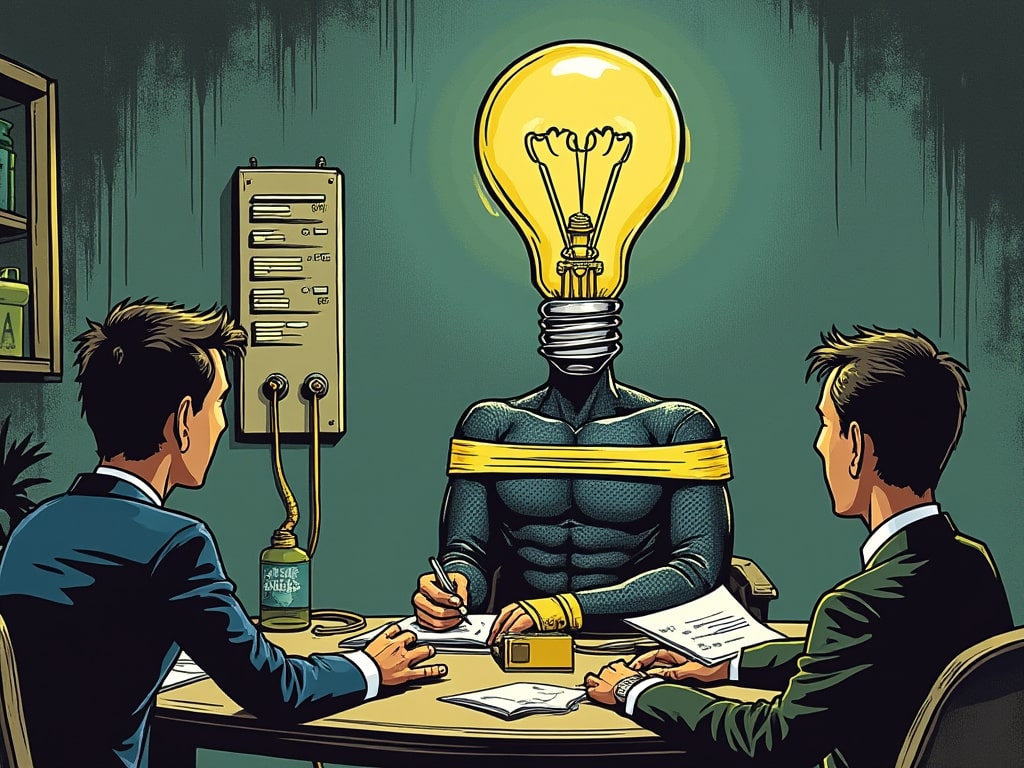As the calendar turns to March 21, 2025, the world economy stands at a crossroads, buffeted by market volatility, looming trade policies, and rapid technological shifts. In the latest episode of the BG2 Pod, aired March 20, venture capitalists Bill Gurley and Brad Gerstner dissect these currents with precision, offering a window into the forces shaping global markets. From the uncertainty surrounding April 2 tariff announcements to Google’s $32 billion acquisition of Wiz, Nvidia’s bold claims at GTC, and the accelerating AI race, their discussion—spanning nearly two hours—lays bare the high stakes. Gurley, sporting a Florida Gators cap in a nod to March Madness, and Gerstner, fresh from Nvidia’s developer conference, frame a narrative of cautious optimism amid palpable risks.
A Golden Age of Uncertainty
Gerstner opens with a stark assessment: the global economy is traversing a “golden age of uncertainty,” a period marked by political, economic, and technological flux. Since early February, the NASDAQ has shed 10%, with some Mag 7 constituents—Apple, Amazon, and others—down 20-30%. The Federal Reserve’s latest median dot plot, released just before the podcast, underscores the gloom: GDP forecasts for 2025 have been cut from 2.1% to 1.7%, unemployment is projected to rise from 4.3% to 4.4%, and inflation is expected to edge up from 2.5% to 2.7%. Consumer confidence is fraying, evidenced by a sharp drop in TSA passenger growth and softening demand reported by Delta, United, and Frontier Airlines—a leading indicator of discretionary spending cuts.
Yet the picture is not uniformly bleak. Gerstner cites Bank of America’s Brian Moynihan, who notes that consumer spending rose 6% year-over-year, reaching $1.5 trillion quarterly, buoyed by a shift from travel to local consumption. Conversations with hedge fund managers reveal a tactical retreat—exposures are at their lowest quartile—but a belief persists that the second half of 2025 could rebound. The Atlanta Fed’s GDP tracker has turned south, but Gerstner sees this as a release of pent-up uncertainty rather than an inevitable slide into recession. “It can become a self-fulfilling prophecy,” he cautions, pointing to CEOs pausing major decisions until the tariff landscape clarifies.
Tariffs: Reciprocity or Ruin?
The specter of April 2 looms large, when the Trump administration is set to unveil sectoral tariffs targeting the “terrible 15” countries—a list likely encompassing European and Asian nations with perceived trade imbalances. Gerstner aligns with the administration’s vision, articulated by Vice President JD Vance in a recent speech at an American Dynamism event. Vance argued that globalism’s twin conceits—America monopolizing high-value work while outsourcing low-value tasks, and reliance on cheap foreign labor—have hollowed out the middle class and stifled innovation. China’s ascent, from manufacturing to designing superior cars (BYD) and batteries (CATL), and now running AI inference on Huawei’s Ascend 910 chips, exemplifies this shift. Treasury Secretary Scott Bessent frames it as an “American detox,” a deliberate short-term hit for long-term industrial revival.
Gurley demurs, championing comparative advantage. “Water runs downhill,” he asserts, questioning whether Americans will assemble $40 microwaves when China commands 35% of the global auto market with superior products. He doubts tariffs will reclaim jobs—automation might onshore production, but employment gains are illusory. A jump in tariff revenues from $65 billion to $1 trillion, he warns, could tip the economy into recession, a risk the U.S. is ill-prepared to absorb. Europe’s reaction adds complexity: *The Economist*’s Zanny Minton Beddoes reports growing frustration among EU leaders, hinting at a pivot toward China if tensions escalate. Gerstner counters that the goal is fairness, not protectionism—tariffs could rise modestly to $150 billion if reciprocal concessions materialize—though he concedes the administration’s bellicose tone risks misfiring.
The Biden-era “diffusion rule,” restricting chip exports to 50 countries, emerges as a flashpoint. Gurley calls it “unilaterally disarming America in the race to AI,” arguing it hands Huawei a strategic edge—potentially a “Belt and Road” for AI—while hobbling U.S. firms’ access to allies like India and the UAE. Gerstner suggests conditional tariffs, delayed two years, to incentivize onshoring (e.g., TSMC’s $100 billion Arizona R&D fab) without choking the AI race. The stakes are existential: a misstep could cede technological primacy to China.
Google’s $32 Billion Wiz Bet Signals M&A Revival
Amid this turbulence, Google’s $32 billion all-cash acquisition of Wiz, a cloud security firm founded in 2020, signals a thaw in mergers and acquisitions. With projected 2025 revenues of $1 billion, Wiz commands a 30x forward revenue multiple—steep against Google’s 5x—adding just 2% to its $45 billion cloud business. Gerstner hails it as a bellwether: “The M&A market is back.” Gurley concurs, noting Google’s strategic pivot. Barred by EU regulators from bolstering search or AI, and trailing AWS’s developer-friendly platform and Microsoft’s enterprise heft, Google sees security as a differentiator in the fragmented cloud race.
The deal’s scale—$32 billion in five years—underscores Silicon Valley’s capacity for rapid value creation, with Index Ventures and Sequoia Capital notching another win. Gerstner reflects on Altimeter’s misstep with Lacework, a rival that faltered on product-market fit, highlighting the razor-thin margins of venture success. Regulatory hurdles loom: while new FTC chair Matthew Ferguson pledges swift action—“go to court or get out of the way”—differing sharply from Lina Khan’s inertia, Europe’s penchant for thwarting U.S. deals could complicate closure, slated for 2026 with a $3.2 billion breakup fee at risk. Success here could unleash “animal spirits” in M&A and IPOs, with CoreWeave and Cerebras rumored next.
Nvidia’s GTC: A $1 Trillion AI Gambit
At Nvidia’s GTC in San Jose, CEO Jensen Huang—clad in a leather jacket evoking Steve Jobs—addressed 18,000 attendees, doubling down on AI’s explosive growth. He projects a $1 trillion annual market for AI data centers by 2028, up from $500 billion, driven by new workloads and the overhaul of x86 infrastructure with accelerated computing. Blackwell, 40x more capable than Hopper, powers robotics (a $5 billion run rate) to synthetic biology. Yet Nvidia’s stock hovers at $115, 20x next year’s earnings—below Costco’s 50x—reflecting investor skittishness over demand sustainability and competition from DeepSeek and custom ASICs.
Huang dismisses DeepSeek R1’s “cheap intelligence” narrative, insisting compute needs are 100x what was estimated a year ago. Coding agents, set to dominate software development by year-end per Zuckerberg and Musk, fuel this surge. Gurley questions the hype—inference, not pre-training, now drives scaling, and Huang’s “chief revenue destroyer” claim (Blackwell obsoleting Hopper) risks alienating customers on six-year depreciation cycles. Gerstner sees brilliance in Nvidia’s execution—35,000 employees, a top-tier supply chain, and a four-generation roadmap—but both flag government action as the wildcard. Tariffs and export controls could bolster Huawei, though Huang shrugs off near-term impacts.
AI’s Consumer Frontier: OpenAI’s Lead, Margin Mysteries
In consumer AI, OpenAI’s ChatGPT reigns with 400 million weekly users, supply-constrained despite new data centers in Texas. Gerstner calls it a “winner-take-most” market—DeepSeek briefly hit #2 in app downloads but faded, Grok lingers at #65, Gemini at #55. “You need to be 10x better to dent this inertia,” he says, predicting a Q2 product blitz. Gurley agrees the lead looks unassailable, though Meta and Apple’s silence hints at brewing counterattacks.
Gurley’s “negative gross margin AI theory” probes deeper: many AI firms, like Anthropic via AWS, face slim margins due to high acquisition and serving costs, unlike OpenAI’s direct model. With VC billions fueling negative margins—pricing for share, not profit—and compute costs plummeting, unit economics are opaque. Gerstner contrasts this with Google’s near-zero marginal costs, suggesting only direct-to-consumer AI giants can sustain the capex. OpenAI leads, but Meta, Amazon, and Elon Musk’s xAI, with deep pockets, remain wildcards.
The Next 90 Days: Pivot or Peril?
The next 90 days will define 2025. April 2 tariffs could spark a trade war or a fairer field; tax cuts and deregulation promise growth, but AI’s fate hinges on export policies. Gerstner’s optimistic—Nvidia at 20x earnings and M&A’s resurgence signal resilience—but Gurley warns of overreach. A trillion-dollar tariff wall or a Huawei-led AI surge could upend it all. As Gurley puts it, “We’ll turn over a lot of cards soon.” The world watches, and the outcome remains perilously uncertain.

